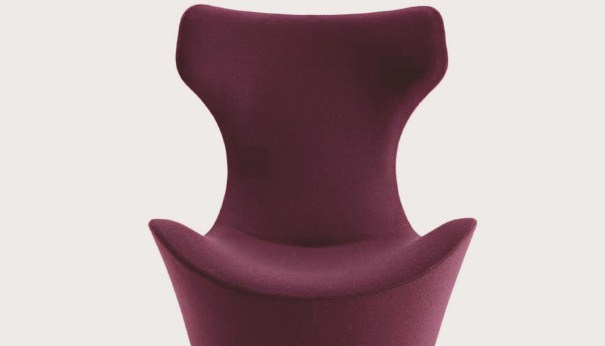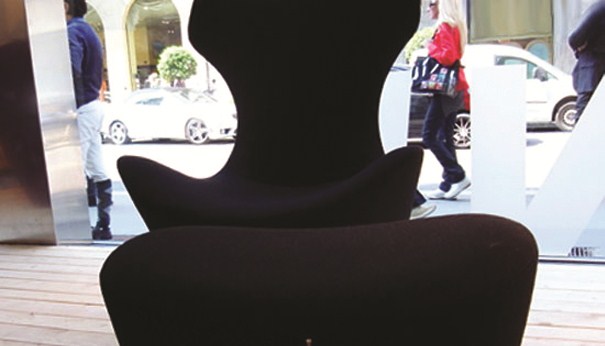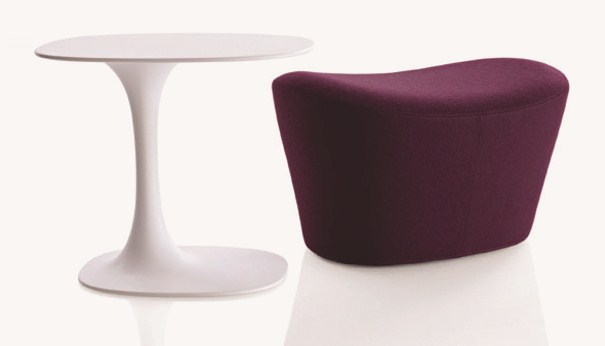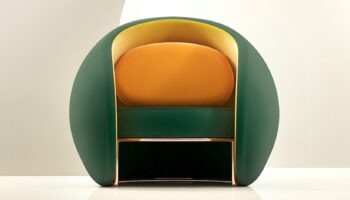Naoto Fukasawa’s Grande Papilio: A Stable Core Beneath a Butterfly’s Wings
Japan’s Naoto Fukasawa is not much of a thinker. At least, that might be the impression one gets from the title of his current series of workshops and exhibitions, “Without Thought.” Though I’d argue that the living luminary intends the name to have a Zen approach that characterizes the work of a true master—exceptionally well-trained and versed 100-fold in the technical aspects of design, yet instinctual enough to produce inspired pieces like Grande Papilio, a new take on an earlier achievement that exemplifies an admirable fusion of imagination and control, like the best brushstrokes of Picasso or Gauguin.
Grande Papilio Armchair and Ottoman. Designed by Naoto Fukasawa.
Fukasawa is internationally recognized as winner of the prestigious I.F. Gold, D & D, and Mainichi Design awards by Germany, the U.K., and Japan, as well as frequent MOMA exhibitor. Like its namesake—the strange and elegant Swallowtail Butterfly—Fukasawa’s piece is delicate and beguiling, unusual enough to repel just a touch, but attractive enough to induce a well-fated encounter. Unlike the gossamer-winged creatures, however—and somewhat like Javier Mariscal’s unorthodox Los Muebles Amorosos—Grande Papilio is earth-bound and surprisingly stable.



In spite of its slim and sexy silhouette and arched scapulae, its pedestal base has a firm hold on terra firma. And, in part, it’s this elusive contradiction that makes the piece so alluring. Formidable enough to project a well-anchored quality, yet sculpted such to suggest the airiness of flight, Grande Papilio has a fantastical quality. Indeed, much as the members of the genus Grande Papilio invoke visions of fairy tale creatures, so does Fukasawa’s chair invite parallels to the great dualistic icons of myth: flying horses, lions with eagle’s wings, fish with the torsos of women—each of them philosophical compatriots with Fukasawa’s beautiful Grande Papilio.




Leave a Reply